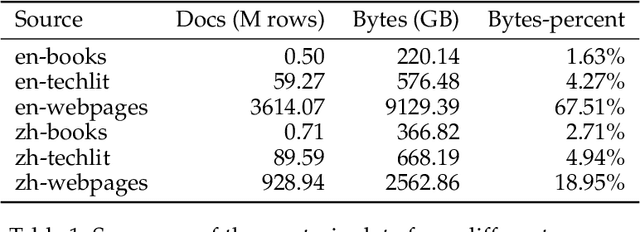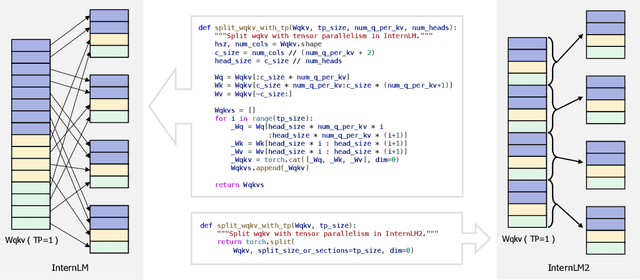Yuzhe Gu
Frequency-Based Alignment of EEG and Audio Signals Using Contrastive Learning and SincNet for Auditory Attention Detection
Mar 06, 2025Abstract:Humans exhibit a remarkable ability to focus auditory attention in complex acoustic environments, such as cocktail parties. Auditory attention detection (AAD) aims to identify the attended speaker by analyzing brain signals, such as electroencephalography (EEG) data. Existing AAD algorithms often leverage deep learning's powerful nonlinear modeling capabilities, few consider the neural mechanisms underlying auditory processing in the brain. In this paper, we propose SincAlignNet, a novel network based on an improved SincNet and contrastive learning, designed to align audio and EEG features for auditory attention detection. The SincNet component simulates the brain's processing of audio during auditory attention, while contrastive learning guides the model to learn the relationship between EEG signals and attended speech. During inference, we calculate the cosine similarity between EEG and audio features and also explore direct inference of the attended speaker using EEG data. Cross-trial evaluations results demonstrate that SincAlignNet outperforms state-of-the-art AAD methods on two publicly available datasets, KUL and DTU, achieving average accuracies of 78.3% and 92.2%, respectively, with a 1-second decision window. The model exhibits strong interpretability, revealing that the left and right temporal lobes are more active during both male and female speaker scenarios. Furthermore, we found that using data from only six electrodes near the temporal lobes maintains similar or even better performance compared to using 64 electrodes. These findings indicate that efficient low-density EEG online decoding is achievable, marking an important step toward the practical implementation of neuro-guided hearing aids in real-world applications. Code is available at: https://github.com/LiaoEuan/SincAlignNet.
Mask-DPO: Generalizable Fine-grained Factuality Alignment of LLMs
Mar 04, 2025Abstract:Large language models (LLMs) exhibit hallucinations (i.e., unfaithful or nonsensical information) when serving as AI assistants in various domains. Since hallucinations always come with truthful content in the LLM responses, previous factuality alignment methods that conduct response-level preference learning inevitably introduced noises during training. Therefore, this paper proposes a fine-grained factuality alignment method based on Direct Preference Optimization (DPO), called Mask-DPO. Incorporating sentence-level factuality as mask signals, Mask-DPO only learns from factually correct sentences in the preferred samples and prevents the penalty on factual contents in the not preferred samples, which resolves the ambiguity in the preference learning. Extensive experimental results demonstrate that Mask-DPO can significantly improve the factuality of LLMs responses to questions from both in-domain and out-of-domain datasets, although these questions and their corresponding topics are unseen during training. Only trained on the ANAH train set, the score of Llama3.1-8B-Instruct on the ANAH test set is improved from 49.19% to 77.53%, even surpassing the score of Llama3.1-70B-Instruct (53.44%), while its FactScore on the out-of-domain Biography dataset is also improved from 30.29% to 39.39%. We further study the generalization property of Mask-DPO using different training sample scaling strategies and find that scaling the number of topics in the dataset is more effective than the number of questions. We provide a hypothesis of what factual alignment is doing with LLMs, on the implication of this phenomenon, and conduct proof-of-concept experiments to verify it. We hope the method and the findings pave the way for future research on scaling factuality alignment.
Exploring the Limit of Outcome Reward for Learning Mathematical Reasoning
Feb 10, 2025Abstract:Reasoning abilities, especially those for solving complex math problems, are crucial components of general intelligence. Recent advances by proprietary companies, such as o-series models of OpenAI, have made remarkable progress on reasoning tasks. However, the complete technical details remain unrevealed, and the techniques that are believed certainly to be adopted are only reinforcement learning (RL) and the long chain of thoughts. This paper proposes a new RL framework, termed OREAL, to pursue the performance limit that can be achieved through \textbf{O}utcome \textbf{RE}w\textbf{A}rd-based reinforcement \textbf{L}earning for mathematical reasoning tasks, where only binary outcome rewards are easily accessible. We theoretically prove that behavior cloning on positive trajectories from best-of-N (BoN) sampling is sufficient to learn the KL-regularized optimal policy in binary feedback environments. This formulation further implies that the rewards of negative samples should be reshaped to ensure the gradient consistency between positive and negative samples. To alleviate the long-existing difficulties brought by sparse rewards in RL, which are even exacerbated by the partial correctness of the long chain of thought for reasoning tasks, we further apply a token-level reward model to sample important tokens in reasoning trajectories for learning. With OREAL, for the first time, a 7B model can obtain 94.0 pass@1 accuracy on MATH-500 through RL, being on par with 32B models. OREAL-32B also surpasses previous 32B models trained by distillation with 95.0 pass@1 accuracy on MATH-500. Our investigation also indicates the importance of initial policy models and training queries for RL. Code, models, and data will be released to benefit future research\footnote{https://github.com/InternLM/OREAL}.
ANAH-v2: Scaling Analytical Hallucination Annotation of Large Language Models
Jul 05, 2024



Abstract:Large language models (LLMs) exhibit hallucinations in long-form question-answering tasks across various domains and wide applications. Current hallucination detection and mitigation datasets are limited in domains and sizes, which struggle to scale due to prohibitive labor costs and insufficient reliability of existing hallucination annotators. To facilitate the scalable oversight of LLM hallucinations, this paper introduces an iterative self-training framework that simultaneously and progressively scales up the hallucination annotation dataset and improves the accuracy of the hallucination annotator. Based on the Expectation Maximization (EM) algorithm, in each iteration, the framework first applies a hallucination annotation pipeline to annotate a scaled dataset and then trains a more accurate hallucination annotator on the dataset. This new hallucination annotator is adopted in the hallucination annotation pipeline used for the next iteration. Extensive experimental results demonstrate that the finally obtained hallucination annotator with only 7B parameters surpasses the performance of GPT-4 and obtains new state-of-the-art hallucination detection results on HaluEval and HalluQA by zero-shot inference. Such an annotator can not only evaluate the hallucination levels of various LLMs on the large-scale dataset but also help to mitigate the hallucination of LLMs generations, with the Natural Language Inference (NLI) metric increasing from 25% to 37% on HaluEval.
CLDTA: Contrastive Learning based on Diagonal Transformer Autoencoder for Cross-Dataset EEG Emotion Recognition
Jun 12, 2024



Abstract:Recent advances in non-invasive EEG technology have broadened its application in emotion recognition, yielding a multitude of related datasets. Yet, deep learning models struggle to generalize across these datasets due to variations in acquisition equipment and emotional stimulus materials. To address the pressing need for a universal model that fluidly accommodates diverse EEG dataset formats and bridges the gap between laboratory and real-world data, we introduce a novel deep learning framework: the Contrastive Learning based Diagonal Transformer Autoencoder (CLDTA), tailored for EEG-based emotion recognition. The CLDTA employs a diagonal masking strategy within its encoder to extracts full-channel EEG data's brain network knowledge, facilitating transferability to the datasets with fewer channels. And an information separation mechanism improves model interpretability by enabling straightforward visualization of brain networks. The CLDTA framework employs contrastive learning to distill subject-independent emotional representations and uses a calibration prediction process to enable rapid adaptation of the model to new subjects with minimal samples, achieving accurate emotion recognition. Our analysis across the SEED, SEED-IV, SEED-V, and DEAP datasets highlights CLDTA's consistent performance and proficiency in detecting both task-specific and general features of EEG signals related to emotions, underscoring its potential to revolutionize emotion recognition research.
ANAH: Analytical Annotation of Hallucinations in Large Language Models
May 30, 2024Abstract:Reducing the `$\textit{hallucination}$' problem of Large Language Models (LLMs) is crucial for their wide applications. A comprehensive and fine-grained measurement of the hallucination is the first key step for the governance of this issue but is under-explored in the community. Thus, we present $\textbf{ANAH}$, a bilingual dataset that offers $\textbf{AN}$alytical $\textbf{A}$nnotation of $\textbf{H}$allucinations in LLMs within Generative Question Answering. Each answer sentence in our dataset undergoes rigorous annotation, involving the retrieval of a reference fragment, the judgment of the hallucination type, and the correction of hallucinated content. ANAH consists of ~12k sentence-level annotations for ~4.3k LLM responses covering over 700 topics, constructed by a human-in-the-loop pipeline. Thanks to the fine granularity of the hallucination annotations, we can quantitatively confirm that the hallucinations of LLMs progressively accumulate in the answer and use ANAH to train and evaluate hallucination annotators. We conduct extensive experiments on studying generative and discriminative annotators and show that, although current open-source LLMs have difficulties in fine-grained hallucination annotation, the generative annotator trained with ANAH can surpass all open-source LLMs and GPT-3.5, obtain performance competitive with GPT-4, and exhibits better generalization ability on unseen questions.
ESC: Efficient Speech Coding with Cross-Scale Residual Vector Quantized Transformers
Apr 30, 2024Abstract:Existing neural audio codecs usually sacrifice computational complexity for audio quality. They build the feature transformation layers mainly on convolutional blocks, which are not inherently appropriate for capturing local redundancies of audio signals. As compensation, either adversarial losses from a discriminator or a large number of model parameters are required to improve the codec. To that end, we propose Efficient Speech Codec (ESC), a lightweight parameter-efficient codec laid on cross-scale residual vector quantization and transformers. Our model leverages mirrored hierarchical window-attention transformer blocks and performs step-wise decoding from coarse-to-fine feature representations. To enhance codebook utilization, we design a learning paradigm that involves a pre-training stage to assist with codec training. Extensive results show that ESC can achieve high audio quality with much lower complexity, which is a prospective alternative in place of existing codecs.
How Did We Get Here? Summarizing Conversation Dynamics
Apr 29, 2024Abstract:Throughout a conversation, the way participants interact with each other is in constant flux: their tones may change, they may resort to different strategies to convey their points, or they might alter their interaction patterns. An understanding of these dynamics can complement that of the actual facts and opinions discussed, offering a more holistic view of the trajectory of the conversation: how it arrived at its current state and where it is likely heading. In this work, we introduce the task of summarizing the dynamics of conversations, by constructing a dataset of human-written summaries, and exploring several automated baselines. We evaluate whether such summaries can capture the trajectory of conversations via an established downstream task: forecasting whether an ongoing conversation will eventually derail into toxic behavior. We show that they help both humans and automated systems with this forecasting task. Humans make predictions three times faster, and with greater confidence, when reading the summaries than when reading the transcripts. Furthermore, automated forecasting systems are more accurate when constructing, and then predicting based on, summaries of conversation dynamics, compared to directly predicting on the transcripts.
InternLM2 Technical Report
Mar 26, 2024



Abstract:The evolution of Large Language Models (LLMs) like ChatGPT and GPT-4 has sparked discussions on the advent of Artificial General Intelligence (AGI). However, replicating such advancements in open-source models has been challenging. This paper introduces InternLM2, an open-source LLM that outperforms its predecessors in comprehensive evaluations across 6 dimensions and 30 benchmarks, long-context modeling, and open-ended subjective evaluations through innovative pre-training and optimization techniques. The pre-training process of InternLM2 is meticulously detailed, highlighting the preparation of diverse data types including text, code, and long-context data. InternLM2 efficiently captures long-term dependencies, initially trained on 4k tokens before advancing to 32k tokens in pre-training and fine-tuning stages, exhibiting remarkable performance on the 200k ``Needle-in-a-Haystack" test. InternLM2 is further aligned using Supervised Fine-Tuning (SFT) and a novel Conditional Online Reinforcement Learning from Human Feedback (COOL RLHF) strategy that addresses conflicting human preferences and reward hacking. By releasing InternLM2 models in different training stages and model sizes, we provide the community with insights into the model's evolution.
 Add to Chrome
Add to Chrome Add to Firefox
Add to Firefox Add to Edge
Add to Edge